Kate’s Back in Action: What the Court Circular Reveals
Inside the monarchy’s daily report that tracked the Princess's return to official duties
Just days after releasing the heartening news that she has completed her course of chemotherapy treatment, it was widely reported that the Princess of Wales had also made her long-awaited return to work with a private meeting at Windsor Castle. This meeting, apparently first briefed to royal reporters, focused on Kate’s treasured Early Years initiative.
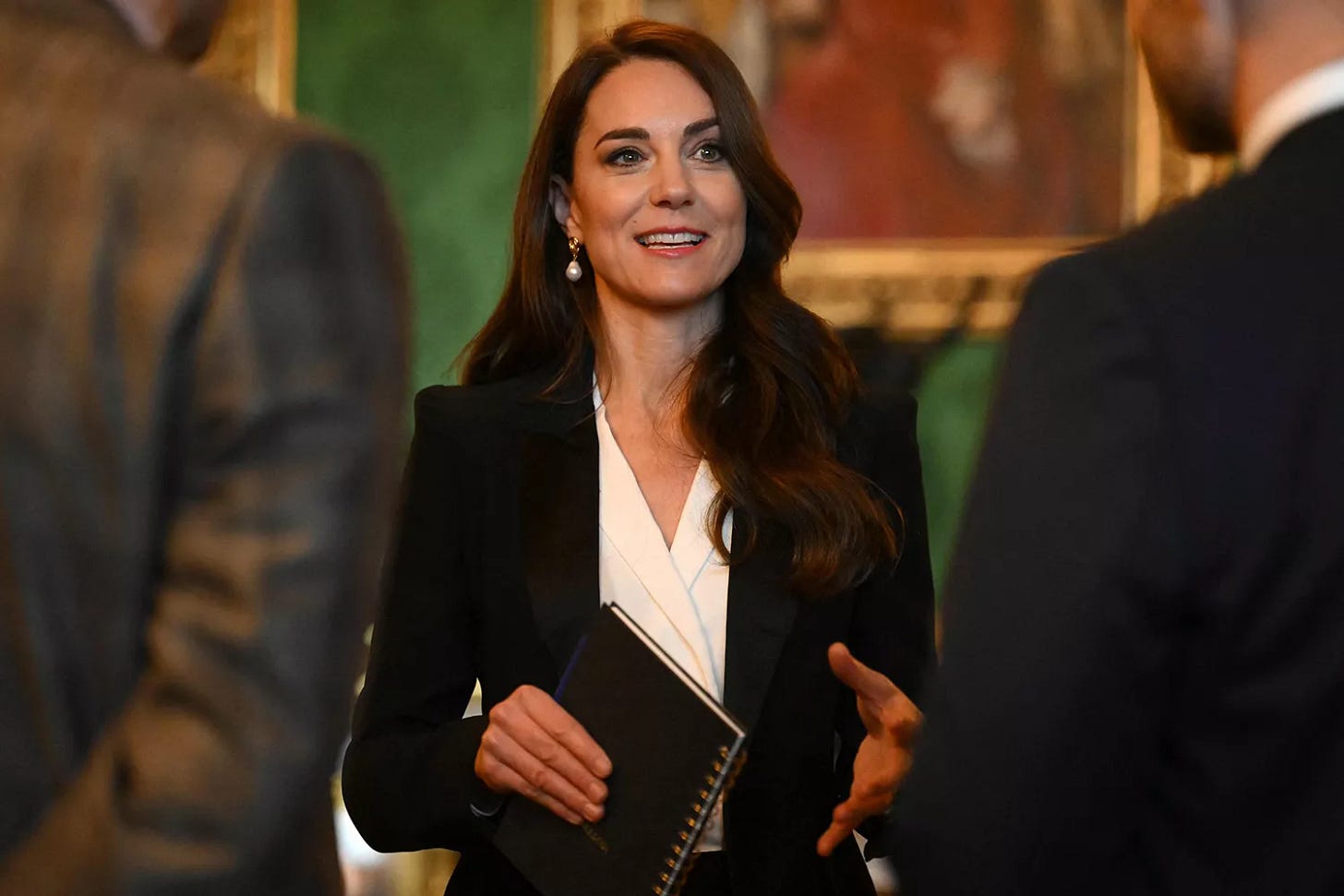
The meeting was held behind closed doors, and reporters were advised that no photos would be released—so unlike Kensington Palace’s video from last week, royal watchers (and critics) remain well within their rights to say “pics or it didn’t happen.” But there’s one way, to those attuned to the British monarchy’s quirks, that Kate’s return to day-to-day work actually signified a quiet return to normalcy.
It was not a custom-made dress and a public spectacle that signaled the Princess was once again taking up official duties, but old-fashioned pen and ink. On September 17th, the day after the meeting at Windsor, the Court Circular officially recorded for posterity that “The Princess of Wales, Joint Patron, the Royal Foundation of The Prince and Princess of Wales, this afternoon held an Early Years Meeting at Windsor Castle.” This amounts to the third official engagement for the Princess of Wales in 2024, following her public appearances at Trooping the Colour in June and at Wimbledon in July.
As I said, don’t hold your breath for photos to mark the occasion. Kate’s Early Years wasn’t a public appearance—it was a private work engagement. And that aligns with what we were told earlier this month when Kate’s voiceover indicated that she is “looking forward to being back at work and undertaking a few more public engagements in the coming months when I can.” “Being back at work” and appearing in public are two different things, in Kate’s mind.
The official palace record makes no such distinction. Public and private duties alike get recorded without prejudice. But what, exactly, is the Court Circular?
Royals on the Clock
Any attempt to track what the British royal family considers its day-to-day work will lead you to the Court Circular. Published daily, it’s a formal record of official engagements undertaken by members of the royal family. The Court Circular offers insight into the monarchy’s “work” commitments, tracking everything from diplomatic meetings to lavish state events.
Each day, it offers a peek into the royals' work life, with activities often ranging from formal receptions at Buckingham Palace to overseas tours to—these days—virtual meetings.
As a result, the Court Circular also plays a major role in royal reporting. It’s how we know that Princess Anne consistently beats her family members for the most annual engagements. In 2023, for example, she completed more than 400 official events, maintaining her reputation as the hardest-working royal—thanks to her duties being recorded in the Court Circular.
Of course, not all members of the royal family feature equally in the Court Circular. Priority is given to working royals—those who perform duties on behalf of the Crown. While figures like King Charles III, Queen Camilla, the Prince and Princess of Wales, and Princess Anne feature regularly, non-working royals (such as the Duke and Duchess of Sussex since stepping back from official royal duties) do not appear.
Exceptions are sometimes made for large-scale events like the Funeral of Queen Elizabeth II in September 2022, which earned Prince Harry his last entry into the Court Circular:
In Spare, Prince Harry actually shared his frustrations with the Court Circular and how it was used within the royal family. He criticized the system for being leveraged as a tool, used to measure and compare the work of family members—especially in terms of the number of official engagements. He noted that there was a competition among the royals to appear in the Court Circular as the hardest-working, with certain members striving to have their names mentioned more frequently through, essentially, busy work.
Harry also pointed out that the system was (and remains) flawed, as not all engagements that get recorded are equal in importance or time commitment. For example, a quick ribbon-cutting counts as one engagement, as does a multi-hour visit to a charity. A private, 15-minute Zoom meeting with Royal Foundation staff, likewise, will award one family member one “point,” while a high-profile event on an overseas tour will award another…also one “point.”
This system, in Harry’s view and your humble author’s, warps the public perception of who contributes the most to the royal workload. He called the Court Circular a “sinister document” that reduced his family to a “circular firing squad.” On the annual “tally” of each royal’s official engagements, which relies on the Court Circular for data, her wrote: “At the end of the year, when all the numbers got tallied, comparisons would be made in the press… ‘Ah, this one's busier than that one.’ ‘Ah, this one's a lazy s***.’”
Returning to Kate, the coverage of her Early Years meeting as her first “on-the-record” meeting since her cancer treatment “palace sources” have been insistent that the Princess had already returned to working from home on her good days. Awkward, definitely, but that’s the Court Circular system for you. Only “formal” work can be recorded.
With its endless, banal insight into royal engagements, the hierarchy of official duties, and the family members who appear to devote the most time to public service, the Court Circular is certainly an unforgiving document. And, believe it or not, that was its original purpose.
In History
In 1803, George III, who was “frustrated at the inaccurate reporting of Royal events in national newspapers,” the first official dispatches on courtly news were relayed by…the “Court Newsman.” Fitting. The position consisted solely of “supplying the daily newspapers with accurate information on Royal movements, which had been approved and supplied by the Court.” This dispatch became known as the Court Circular.
In the Georgian era—with all its rakish princes—the Court Circular also served as a means for the monarch to keep an eye on his sons and their activities. At that time, the monarchy was still deeply intertwined with aristocratic society and courtly rituals, so the types of events recorded were more ceremonial and social in nature.
Still, the Court Circular of the 19th century did note official audiences with foreign dignitaries, ambassadors, and ministers, which could influence alliances and international relations in a very real way. It also would have included events like balls, concerts, and theatrical performances at court. The monarchy was a major patron of the arts, and royal attendance at such events underscored their cultural influence.
Even events like royal hunts, which were popular among the Georgian monarchs, would often be recorded in the Court Circular, as these were not just leisure activities but key social events where political and aristocratic alliances were often reinforced. Even private meals and intimate gatherings could be recorded for the public’s knowledge; the royal family’s comings-and-goings were really that central to British society.
Birth announcements are also written in the Court Circular. Here’s the entry for April 21, 1926, when Elizabeth Bowes-Lyon gave birth to the future Queen Elizabeth II at 2:40 am:
I love this particular newspaper clipping because it not only records the birth of the 20th century’s most iconic monarch, but also tells us with whom King George V and Queen Mary ate both lunch and dinner!
Today, the Court Circular is published by the royal household in newspapers like The Times and The Daily Telegraph, and is also available on the royal family’s official website. But in its earliest form, the Court Circular was not widely distributed; it was published instead through printed pamphlets that were then distributed across high society. (Think Lady Whistledown…but much more opaque). The details of royal engagements were later included in the society columns of newspapers, which catered to the upper classes who were interested in the affairs of the court.
Over time, especially in the 19th century during Queen Victoria’s reign, the Court Circular began to appear in major newspapers like The Times, which expanded its reach to a wider audience. This shift allowed the public to access information about royal duties and engagements, helping to shape the image of a hardworking, responsible monarchy.
A copy of each day’s Court Circular, as reported in The Times, is retained by Buckingham Palace in a special book, which is eventually passed to the Royal Archives at Windsor Castle. And so, whatever gets entered into it also enters the historical record.
Keeping Tabs
In the 20th century, the Court Circular likewise began to shift its focus to modern diplomatic and charity work, in a reflection of the monarchy’s evolving role as an institution at the center of a democratic nation. Today, the Court Circular still functions as the go-to source on royal movements—but mostly for the press, royal commentators, and the public.
As a tool, it is most often used to verify the official duties of the royal family. While it no longer includes personal details or hints at behind-the-scenes gossip, it does provide an overview of where the royals have been, with whom they have met, and what causes they support.
Throughout the court circular’s entire existence, highly formalized public occasions involving the entire court have also been recorded. Underlining those key annual events—like Trooping the Colour, Commonwealth Day services, state banquets, diplomatic receptions, and Remembrance Sunday observances—remains an important function of the Court Circular today. Often, those big events are even preemptively entered into the records, once the royal household has confirmed which family members will attend.
While to an outsider, it may seem like merely a dull log of appointments and meetings, the Court Circular serves a greater purpose: it offers transparency about how the monarchy functions in the modern world. The British royal family, though symbolic, continues to wield soft diplomatic power, and where they turn their attention matters. By documenting their official activities, the Court Circular ensures that the royals are seen as active, hard-working representatives of the UK, contributing to national and international causes.
It also provides a degree of accountability. With the monarchy receiving taxpayer funds annually through the Sovereign Grant, the British public expects the royal family to show up and prove that they are fulfilling their obligations. The Court Circular is one way of proving (or, at least, insisting) that royal work is being done.






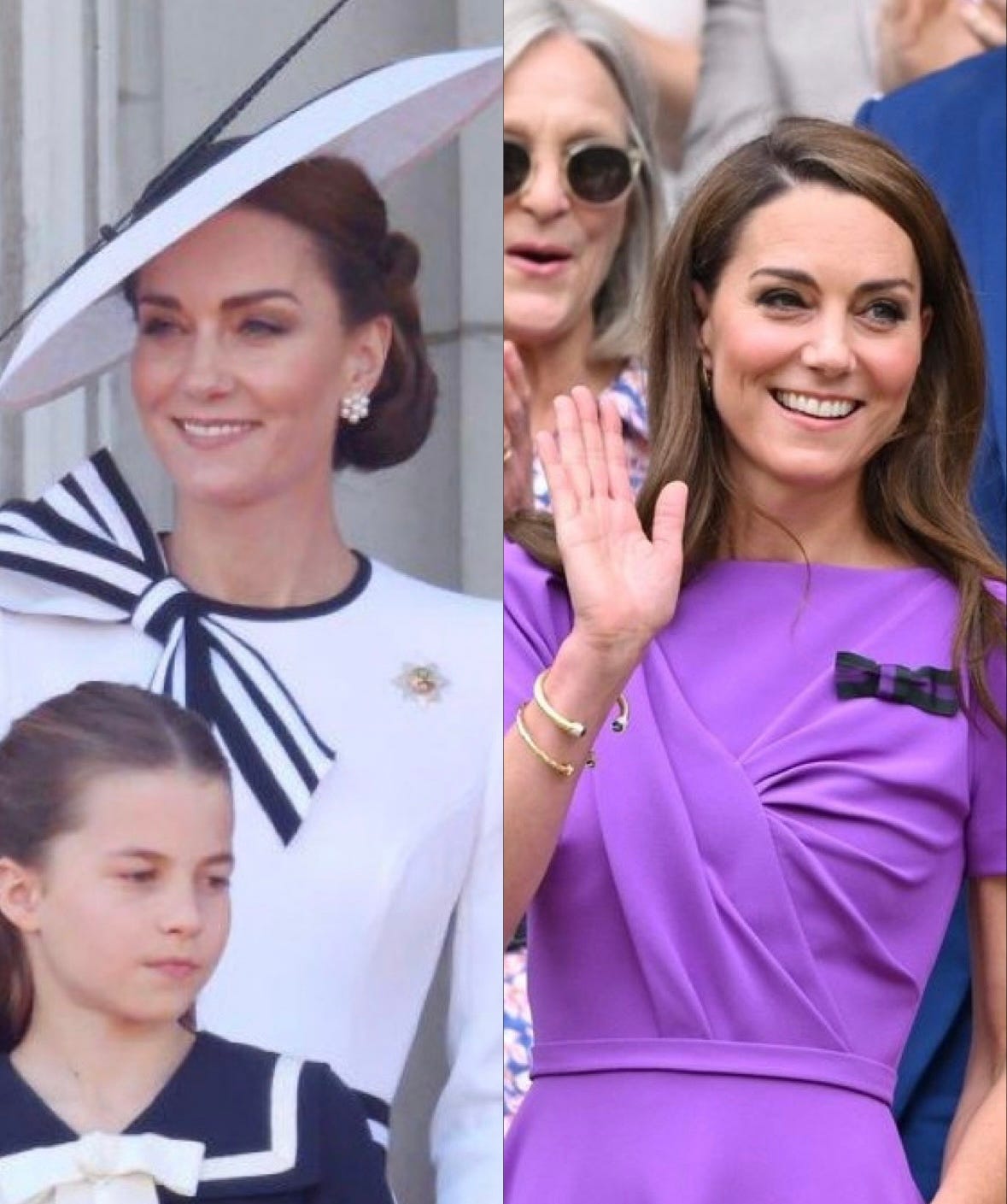
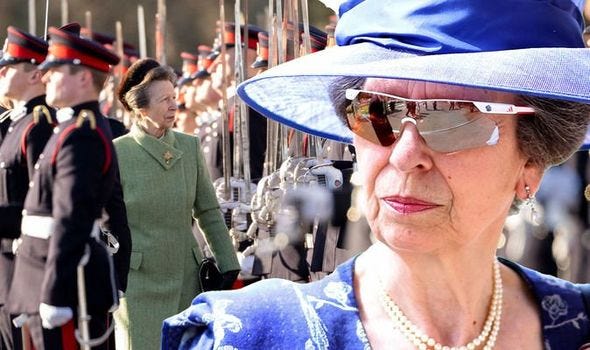


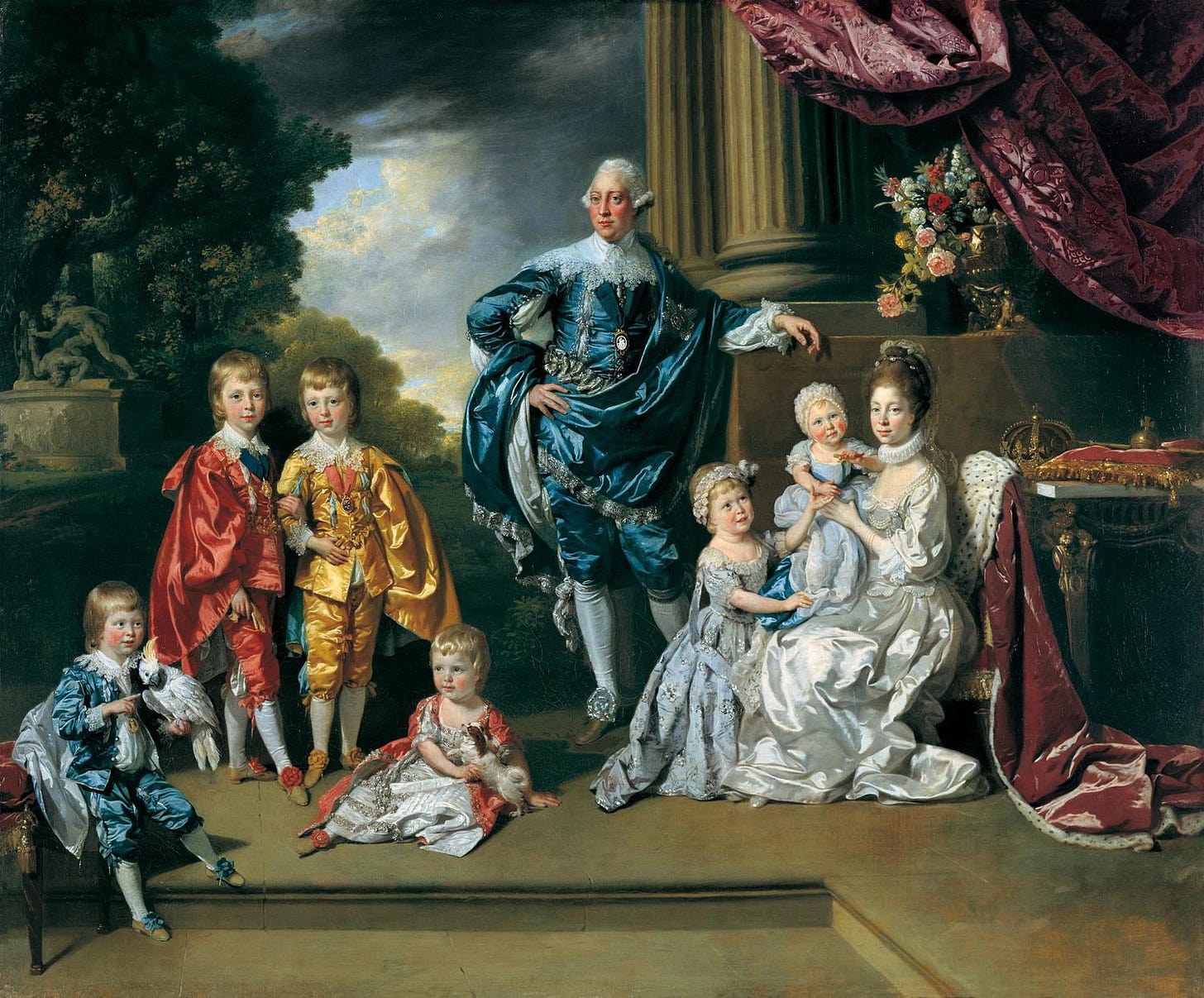
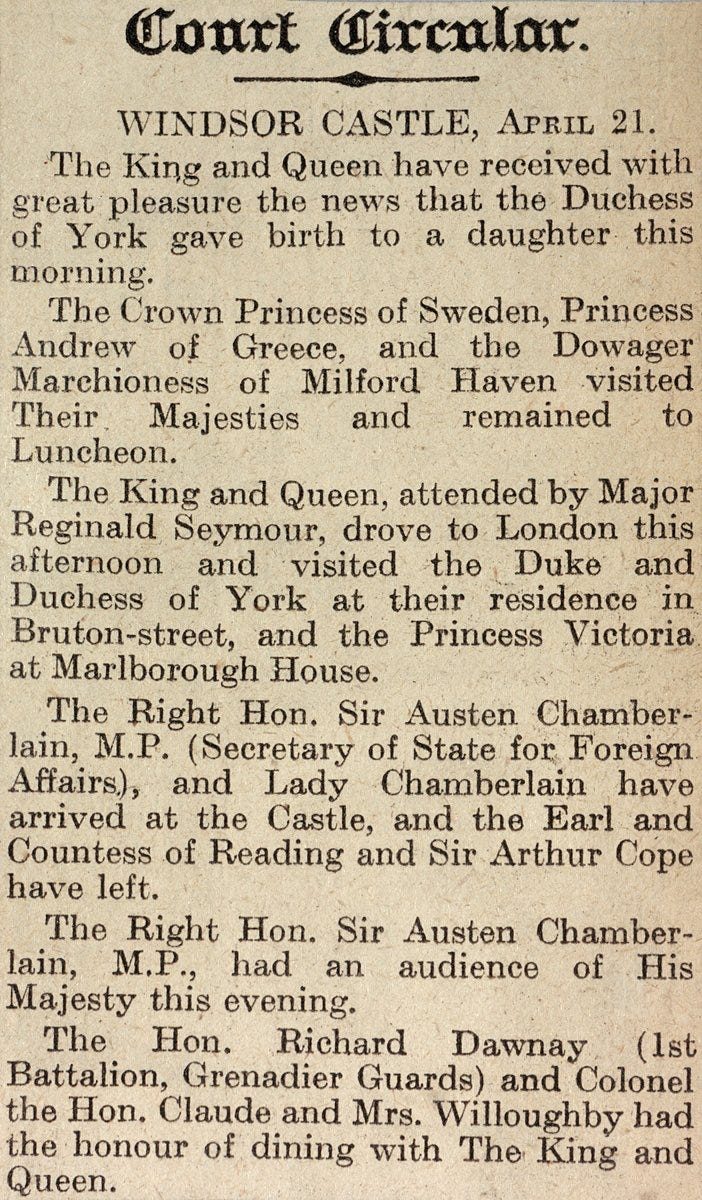

The point about Kate differentiating between work and public appearances is interesting: I never thought about it that way! I think Kate will be doing many more Zoom meetings at home vs publicly attending charity events for the next year. Which, we'll just have to trust that things are being accomplished, won't we?